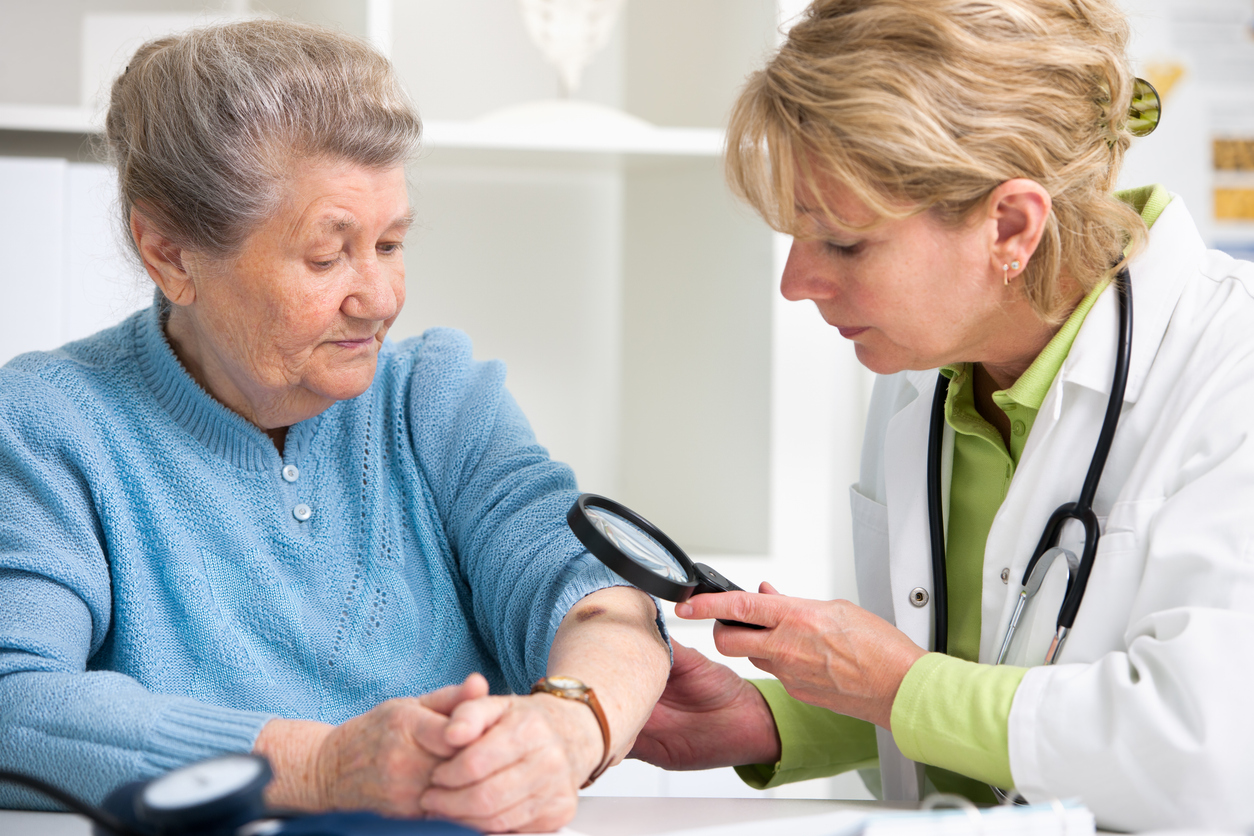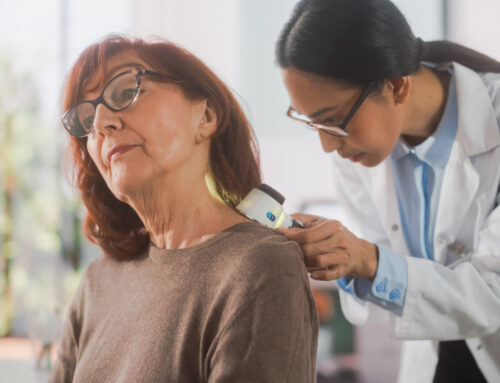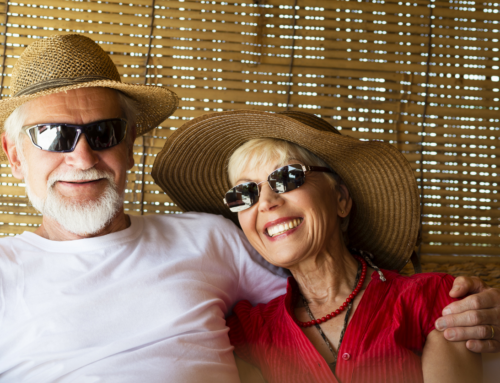Skin cancer is one of the most common types of cancer, affecting millions of people worldwide. As people age, the risk of developing skin cancer increases significantly, making it a major health concern for the elderly. Understanding the risks, prevention strategies, and treatment options is crucial for protecting the health and well-being of older adults.
Why the Elderly Are at Higher Risk
- Cumulative Sun Exposure: The primary cause of skin cancer is prolonged exposure to ultraviolet (UV) radiation from the sun or artificial sources like tanning beds. Over a lifetime, the skin accumulates damage from UV rays, leading to an increased risk of skin cancer as people age.
- Weakened Immune System: As the body ages, the immune system often becomes less effective at identifying and attacking abnormal cells, including cancerous ones. This weakened immune response can make it easier for skin cancer to develop and progress in older adults.
- Skin Changes: The skin undergoes various changes with age, including thinning, loss of elasticity, and decreased ability to repair damage. These changes can make the skin more susceptible to cancerous growths.
- Delayed Detection: In the elderly, skin cancer may go unnoticed for longer periods due to a variety of factors, including decreased skin sensitivity, difficulty seeing or reaching certain areas of the body, and the mistaken belief that skin changes are just a normal part of aging. Delayed detection often leads to more advanced stages of cancer at the time of diagnosis.
Common Types of Skin Cancer in the Elderly
- Basal Cell Carcinoma (BCC): The most common type of skin cancer, BCC arises from the basal cells in the epidermis, the skin’s outer layer. It usually appears as a pearly or waxy bump on sun-exposed areas like the face, neck, or hands. Although BCC rarely spreads to other parts of the body, it can cause significant local damage if not treated promptly.
- Squamous Cell Carcinoma (SCC): SCC is the second most common type of skin cancer and develops in the squamous cells of the epidermis. It often presents as a red, scaly patch, open sore, or wart-like growth. SCC is more likely than BCC to spread to other parts of the body, especially if left untreated.
- Melanoma: Although less common than BCC and SCC, melanoma is the most dangerous form of skin cancer. It originates in the melanocytes, the cells that produce pigment in the skin. Melanoma can develop in an existing mole or appear as a new, unusual growth. It is highly aggressive and can quickly spread to other organs if not detected and treated early.
Prevention Strategies
Preventing skin cancer in the elderly involves a combination of protective measures and regular skin checks:
- Sun Protection: Encourage the use of broad-spectrum sunscreen with an SPF of 30 or higher, even on cloudy days. Wearing protective clothing, hats, and sunglasses can also help shield the skin from harmful UV rays.
- Avoid Tanning Beds: Older adults should avoid tanning beds, which emit harmful UV radiation that can increase the risk of skin cancer.
- Regular Skin Examinations: Routine self-examinations of the skin can help detect early signs of skin cancer. Pay attention to any new or changing moles, growths, or lesions, and report them to a healthcare provider immediately.
- Annual Dermatologist Visits: Regular check-ups with a dermatologist are essential, especially for those with a history of sun exposure, fair skin, or a family history of skin cancer. Dermatologists can perform a thorough skin examination and identify any suspicious areas that may require further evaluation.
Treatment Options
Treatment for skin cancer in the elderly depends on the type, location, and stage of the cancer, as well as the overall health of the patient:
- Surgical Excision: The most common treatment for skin cancer involves surgically removing the cancerous tissue along with a margin of healthy tissue. This method is effective for most BCCs and SCCs, especially when detected early.
- Mohs Surgery: Mohs surgery is a specialized technique used to treat skin cancer, particularly in areas where preserving as much healthy tissue as possible is important, such as the face. The procedure involves removing the cancerous tissue layer by layer while examining each layer under a microscope until no cancer cells remain.
- Cryotherapy: Cryotherapy involves freezing the cancerous tissue with liquid nitrogen. This treatment is typically used for small, superficial skin cancers or precancerous lesions.
- Radiation Therapy: Radiation therapy may be used for skin cancers that are difficult to treat surgically or for patients who cannot undergo surgery. It is often used in combination with other treatments.
- Topical Treatments: For certain types of skin cancer, particularly superficial BCCs, topical medications like imiquimod or 5-fluorouracil may be prescribed to destroy cancerous cells.
- Immunotherapy and Targeted Therapy: For advanced melanoma or other skin cancers that have spread, immunotherapy and targeted therapies may be used to boost the body’s immune response to cancer or target specific mutations within cancer cells.
Conclusion
Skin cancer is a significant concern for the elderly, but with proper awareness, prevention, and early detection, it is highly treatable. Protecting the skin from UV damage, regularly checking for suspicious changes, and seeking prompt medical attention are key steps in reducing the risk and impact of skin cancer. By taking these precautions, older adults can enjoy healthier skin and a better quality of life in their later years.
If you or someone you know is interested in care management or home healthcare services in South Florida, FirstLantic can help. We are locally owned and operated, providing our patients with the highest quality in-home care services in Fort Lauderdale (Broward County), as well as in-home care services in Delray Beach (Palm Beach County), North Miami (Miami-Dade) and Jupiter (Treasure Coast) since 2000. Click here to contact us.
 AVAILABLE 24 HOURS A DAY/7 DAYS A WEEK
AVAILABLE 24 HOURS A DAY/7 DAYS A WEEK Careers
Careers





